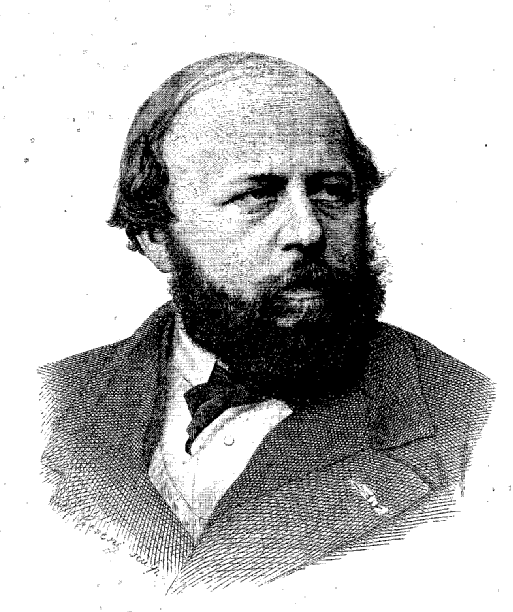|
Wave Surface
In mathematics, Fresnel's wave surface, found by Augustin-Jean Fresnel in 1822, is a quartic surface describing the propagation of light in an optically biaxial crystal. Wave surfaces are special cases of tetrahedroids which are in turn special cases of Kummer surface In algebraic geometry, a Kummer quartic surface, first studied by , is an irreducible nodal surface of degree 4 in \mathbb^3 with the maximal possible number of 16 double points. Any such surface is the Kummer variety of the Jacobian vari ...s. In projective coordinates (''w'':''x'':''y'':''z'') the wave surface is given by : \frac + \frac + \frac =0 References * * * Fresnel, A. (1822), "Second supplément au mémoire sur la double réfraction" (signed 31 March 1822, submitted 1 April 1822), in H. de Sénarmont, É. Verdet, and L. Fresnel (eds.), ''Oeuvres complètes d'Augustin Fresnel'', Paris: Imprimerie Impériale (3 vols., 1866–70)vol.2 (1868) pp.369� ... [...More Info...] [...Related Items...] OR: [Wikipedia] [Google] [Baidu] |
Augustin-Jean Fresnel
Augustin-Jean Fresnel (10 May 1788 – 14 July 1827) was a French civil engineer and physicist whose research in optics led to the almost unanimous acceptance of the wave theory of light, excluding any remnant of Newton's corpuscular theory, from the late 1830s until the end of the 19th century. He is perhaps better known for inventing the catadioptric (reflective/refractive) Fresnel lens and for pioneering the use of "stepped" lenses to extend the visibility of lighthouses, saving countless lives at sea. The simpler dioptric (purely refractive) stepped lens, first proposed by Count Buffon and independently reinvented by Fresnel, is used in screen magnifiers and in condenser lenses for overhead projectors. By expressing Huygens's principle of secondary waves and Young's principle of interference in quantitative terms, and supposing that simple colors consist of sinusoidal waves, Fresnel gave the first satisfactory explanation of diffraction by straight edges, including t ... [...More Info...] [...Related Items...] OR: [Wikipedia] [Google] [Baidu] |
Quartic Surface
In mathematics, especially in algebraic geometry, a quartic surface is a surface defined by an equation of degree 4. More specifically there are two closely related types of quartic surface: affine and projective. An ''affine'' quartic surface is the solution set of an equation of the form :f(x,y,z)=0\ where is a polynomial of degree 4, such as . This is a surface in affine space . On the other hand, a projective quartic surface is a surface in projective space of the same form, but now is a ''homogeneous'' polynomial of 4 variables of degree 4, so for example . If the base field is or the surface is said to be '' real'' or '' complex'' respectively. One must be careful to distinguish between algebraic Riemann surfaces, which are in fact quartic curves over , and quartic surfaces over . For instance, the Klein quartic is a ''real'' surface given as a quartic curve over . If on the other hand the base field is finite, then it is said to be an ''arithmetic quartic sur ... [...More Info...] [...Related Items...] OR: [Wikipedia] [Google] [Baidu] |
Propagation Of Light
Light or visible light is electromagnetic radiation that can be perceived by the human eye. Visible light is usually defined as having wavelengths in the range of 400–700 nanometres (nm), corresponding to frequencies of 750–420 terahertz, between the infrared (with longer wavelengths) and the ultraviolet (with shorter wavelengths). In physics, the term "light" may refer more broadly to electromagnetic radiation of any wavelength, whether visible or not. In this sense, gamma rays, X-rays, microwaves and radio waves are also light. The primary properties of light are intensity, propagation direction, frequency or wavelength spectrum and polarization. Its speed in a vacuum, 299 792 458 metres a second (m/s), is one of the fundamental constants of nature. Like all types of electromagnetic radiation, visible light propagates by massless elementary particles called photons that represents the quanta of electromagnetic field, and can be analyzed as both waves and ... [...More Info...] [...Related Items...] OR: [Wikipedia] [Google] [Baidu] |
Optically Biaxial Crystal
An optic axis of a crystal is a direction in which a ray of transmitted light suffers no birefringence (double refraction). An optic axis is a direction rather than a single line: all rays that are parallel to that direction exhibit the same lack of birefringence. Crystals may have a single optic axis, in which case they are ''uniaxial'', or two different optic axes, in which case they are ''biaxial''. Non-crystalline materials generally have no birefringence and thus, no optic axis. A uniaxial crystal (e.g. calcite, quartz) is isotropic within the plane orthogonal to the optic axis of the crystal. Explanation The internal structure of crystals (the specific structure of the crystal lattice, and the specific atoms or molecules of which it is composed) causes the speed of light in the material, and therefore the material's refractive index, to depend on both the light's direction of propagation and its polarization. The dependence on polarization causes birefringence, in which two ... [...More Info...] [...Related Items...] OR: [Wikipedia] [Google] [Baidu] |
Tetrahedroid
In algebraic geometry, a tetrahedroid (or tétraédroïde) is a special kind of Kummer surface studied by , with the property that the intersections with the faces of a fixed tetrahedron are given by two conics intersecting in four nodes. Tetrahedroids generalize Fresnel's wave surface. References * * Algebraic surfaces Complex surfaces {{algebraic-geometry-stub ... [...More Info...] [...Related Items...] OR: [Wikipedia] [Google] [Baidu] |
Kummer Surface
In algebraic geometry, a Kummer quartic surface, first studied by , is an irreducible nodal surface of degree 4 in \mathbb^3 with the maximal possible number of 16 double points. Any such surface is the Kummer variety of the Jacobian variety of a smooth hyperelliptic curve of genus 2; i.e. a quotient of the Jacobian by the Kummer involution ''x'' ↦ −''x''. The Kummer involution has 16 fixed points: the 16 2-torsion point of the Jacobian, and they are the 16 singular points of the quartic surface. Resolving the 16 double points of the quotient of a (possibly nonalgebraic) torus by the Kummer involution gives a K3 surface with 16 disjoint rational curves; these K3 surfaces are also sometimes called Kummer surfaces. Other surfaces closely related to Kummer surfaces include Weddle surfaces, wave surfaces, and tetrahedroids. Geometry of the Kummer surface Singular quartic surfaces and the double plane model Let K\subset\mathbb^3 be a quartic surfa ... [...More Info...] [...Related Items...] OR: [Wikipedia] [Google] [Baidu] |
Proceedings Of The London Mathematical Society
The London Mathematical Society (LMS) is one of the United Kingdom's learned societies for mathematics (the others being the Royal Statistical Society (RSS), the Institute of Mathematics and its Applications (IMA), the Edinburgh Mathematical Society and the Operational Research Society (ORS). History The Society was established on 16 January 1865, the first president being Augustus De Morgan. The earliest meetings were held in University College, but the Society soon moved into Burlington House, Piccadilly. The initial activities of the Society included talks and publication of a journal. The LMS was used as a model for the establishment of the American Mathematical Society in 1888. Mary Cartwright was the first woman to be President of the LMS (in 1961–62). The Society was granted a royal charter in 1965, a century after its foundation. In 1998 the Society moved from rooms in Burlington House into De Morgan House (named after the society's first president), at 57 ... [...More Info...] [...Related Items...] OR: [Wikipedia] [Google] [Baidu] |
Henri Hureau De Sénarmont
Henri Hureau de Sénarmont (6 September 1808 – 30 June 1862) was a French mineralogist and physicist. He was born in Broué, Eure-et-Loir. From 1822 to 1826, he studied at the École Polytechnique in Paris, then furthered his education at the École des Mines. During the course of his career, he became engineer-in-chief of mines, and professor of mineralogy and director of studies at the École des Mines in Paris.Henri Hureau de Sénarmont - Molecular Expressions biography Sénarmont was distinguished for his research on and demonstrating the |
Émile Verdet
Marcel Émile Verdet (; 13 March 1824 – 3 June 1866) was a French physicist. He worked in magnetism and optics, editing the works of Augustin-Jean Fresnel. Verdet did much to champion the early theory of the conservation of energy in France through his editorial supervision of the ''Annales de chimie et de physique''. The Verdet constant is named after him. Books by Emile Verdet Leçons d'optique physique. Tome I(G. Masson, 1872) Leçons d'optique physique. Tome II(G. Masson, 1872) Recherches sur les propriétés optiques développées dans les corps transparents par l'action du magnétisme(Mallet-Bachelier, 1854) Théorie mécanique de la chaleur. Tome I (G. Masson, 1878) Théorie mécanique de la chaleur. Tome II(G. Masson, 1878) Conférences de physique faites à l'Ecole Normale(Masson, 1872) Conférences de physique faites à l'Ecole Normale. Deuxième partie(Masson, 1872) External linksat Eric Weisstein's World of Physics Wolfram Research, Inc. ( ) is an American ... [...More Info...] [...Related Items...] OR: [Wikipedia] [Google] [Baidu] |
Algebraic Surfaces
In mathematics, an algebraic surface is an algebraic variety of dimension two. In the case of geometry over the field of complex numbers, an algebraic surface has complex dimension two (as a complex manifold, when it is non-singular) and so of dimension four as a smooth manifold. The theory of algebraic surfaces is much more complicated than that of algebraic curves (including the compact Riemann surfaces, which are genuine surfaces of (real) dimension two). Many results were obtained, however, in the Italian school of algebraic geometry, and are up to 100 years old. Classification by the Kodaira dimension In the case of dimension one varieties are classified by only the topological genus, but dimension two, the difference between the arithmetic genus p_a and the geometric genus p_g turns to be important because we cannot distinguish birationally only the topological genus. Then we introduce the irregularity for the classification of them. A summary of the results (in det ... [...More Info...] [...Related Items...] OR: [Wikipedia] [Google] [Baidu] |
Complex Surfaces
Complex commonly refers to: * Complexity, the behaviour of a system whose components interact in multiple ways so possible interactions are difficult to describe ** Complex system, a system composed of many components which may interact with each other * Complex (psychology), a core pattern of emotions etc. in the personal unconscious organized around a common theme such as power or status Complex may also refer to: Arts, entertainment and media * Complex (English band), formed in 1968, and their 1971 album ''Complex'' * Complex (band), a Japanese rock band * ''Complex'' (album), by Montaigne, 2019, and its title track * ''Complex'' (EP), by Rifle Sport, 1985 * "Complex" (song), by Gary Numan, 1979 * Complex Networks, publisher of magazine ''Complex'', now online Biology * Protein–ligand complex, a complex of a protein bound with a ligand * Exosome complex, a multi-protein intracellular complex * Protein complex, a group of two or more associated polypeptide chains * Spec ... [...More Info...] [...Related Items...] OR: [Wikipedia] [Google] [Baidu] |


.jpg)

